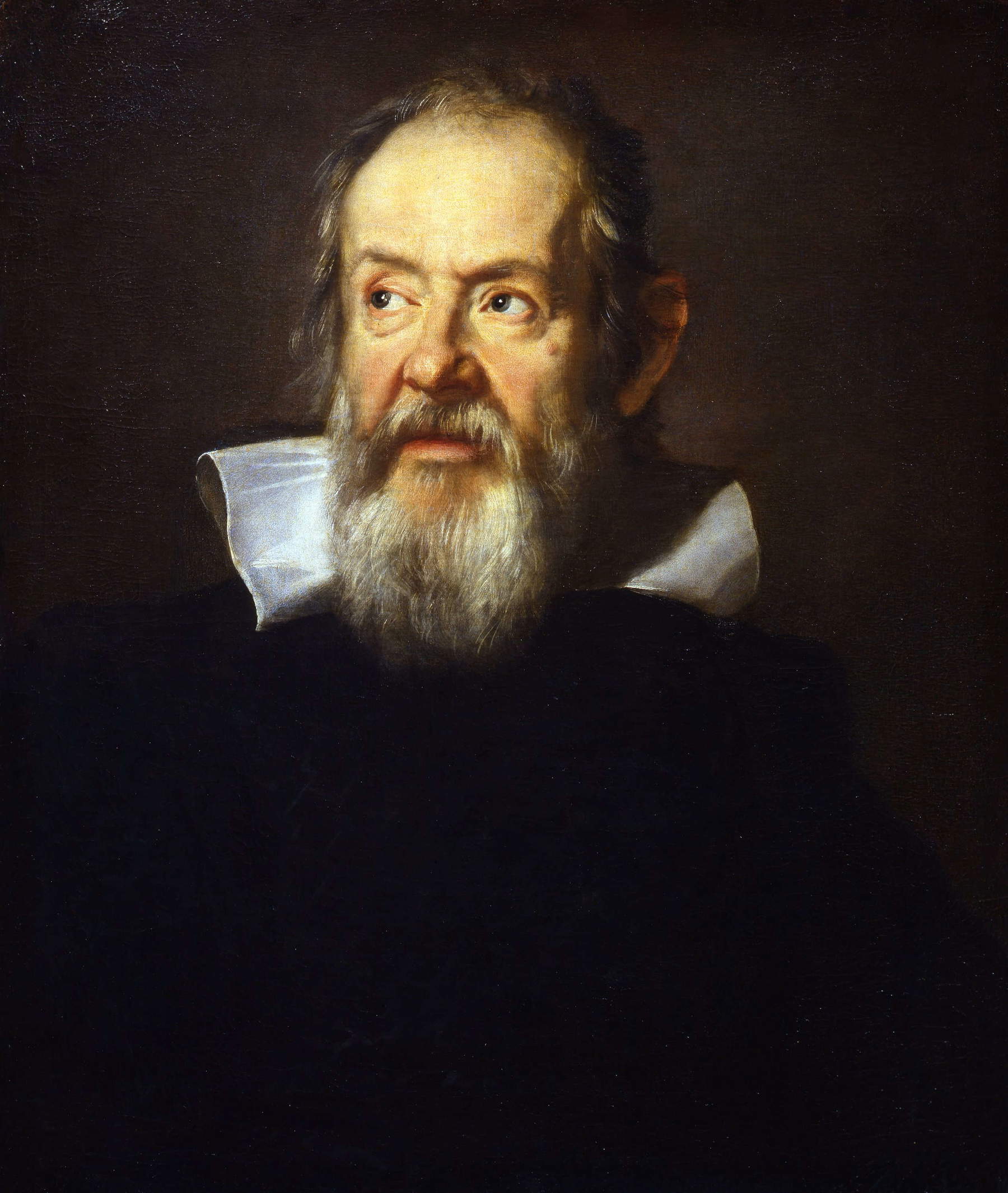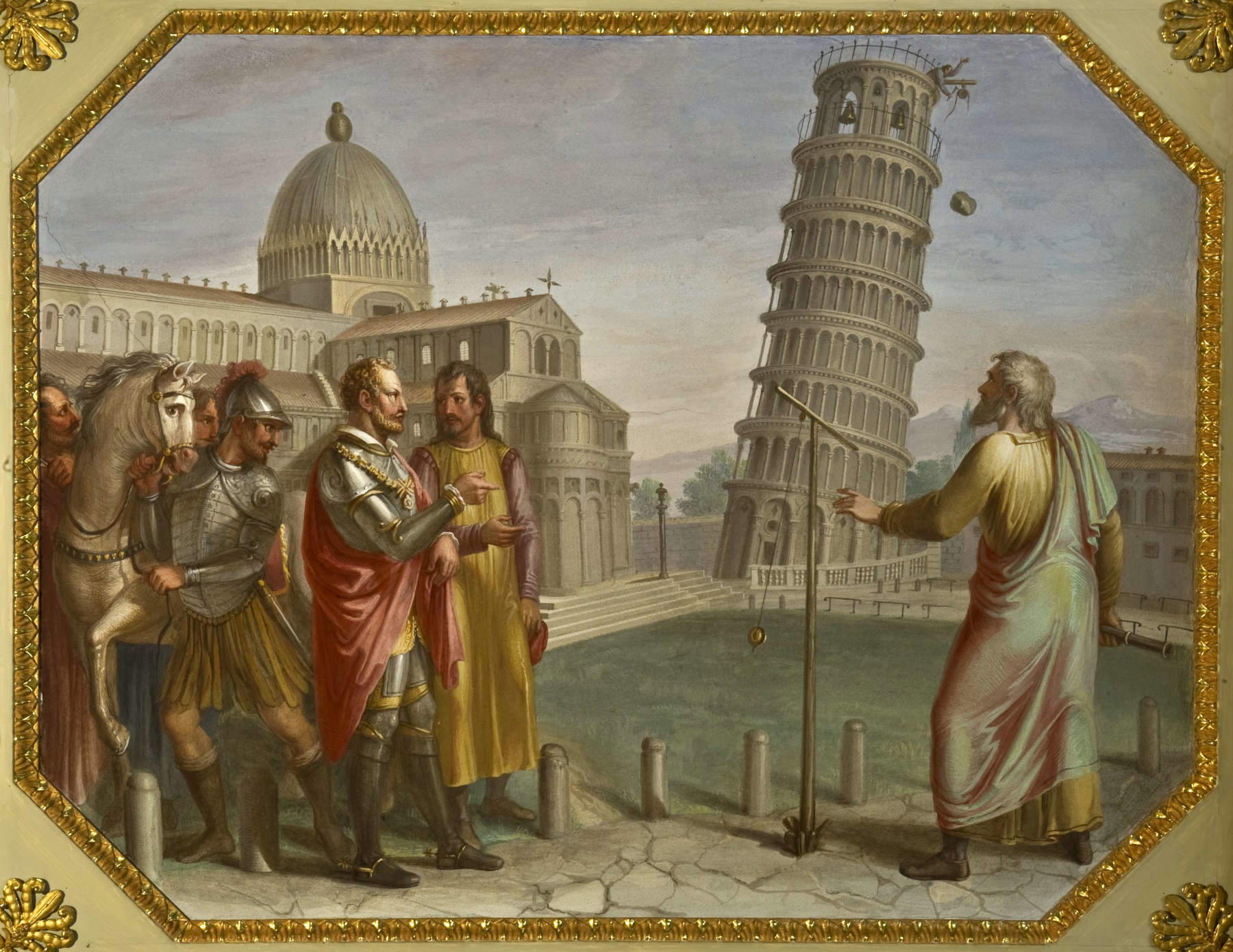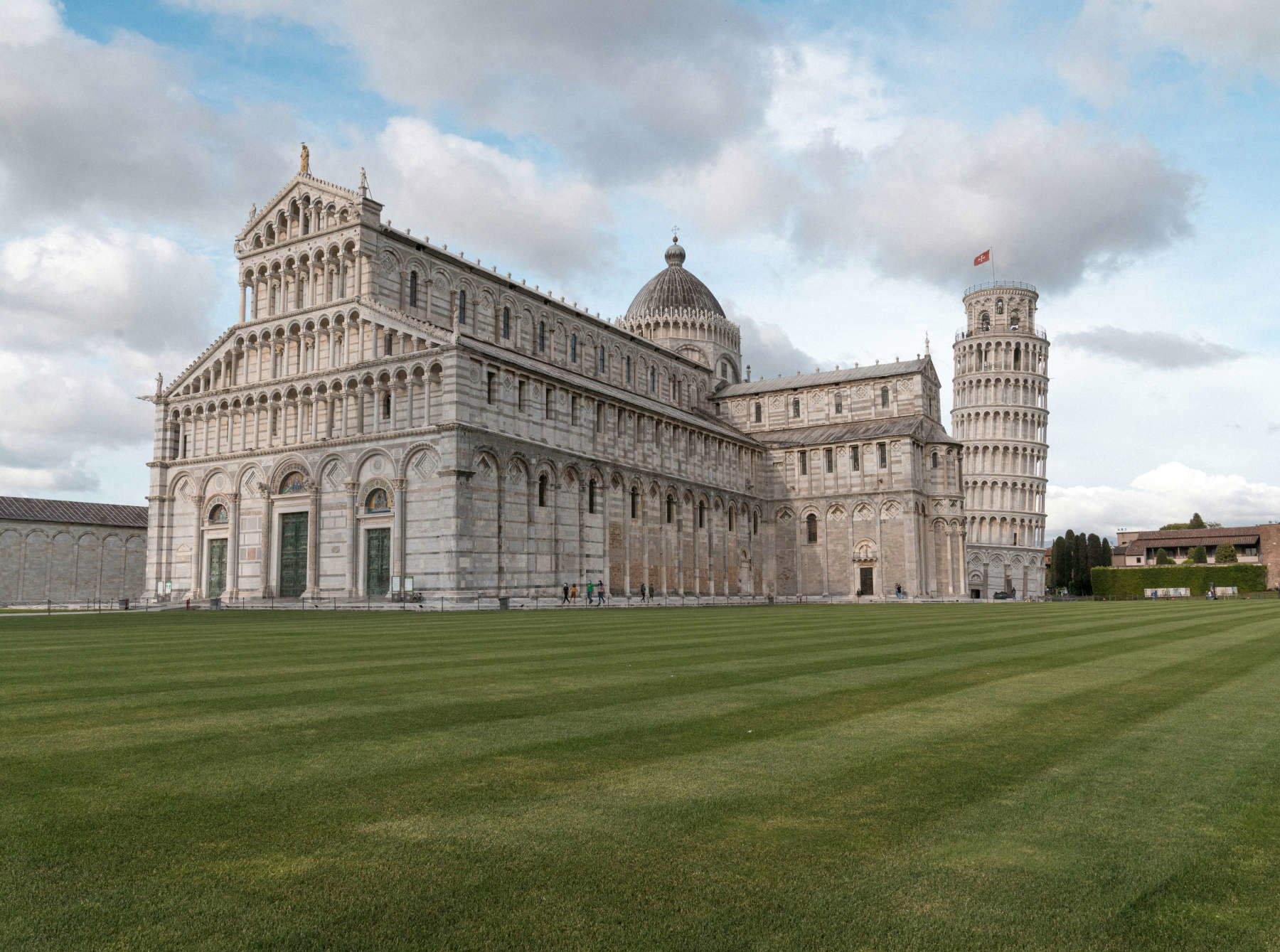The bell tower of the Primatial Cathedral of Santa Maria Assunta in Pisa, universally known as the Leaning Tower, is the symbol of the city and of Italy in general, its fame is boundless, and it is also said to have been the celebrated stage and laboratory of an important experiment by the Pisan scientist Galileo Galilei.
This is theexperiment of the gravi or the fall of the gravi, about which it is still debated today whether it was actually carried out, or rather attested to as mere mental speculation. The experiment took its starting point from a theorization of Aristotle, the philosopher who in fourth-century B.C.E. Athens had formulated explanations to numerous physical phenomena; among them, one of his fundamental propositions was that there is no effect without a cause, and by extension, therefore, there is no motion without a force to act upon it. Aristotle argued that the speed of an object is proportional to the driving force and inversely proportional to the resistance of the medium.
Applying these ideas to falling bodies, the philosopher ended up concluding that different bodies fall at different speeds, and more specifically, the greater the weight, the greater the speed of fall. This is a statement that is consistent with the phenomenon actually observed, and it remained conviction for a very long time, and still enjoys great fortune today.
But in fact it was an erroneous theory that was criticized repeatedly, as early as the sixth century AD by the Byzantine philosopher John Philoponus, and then more veminently in the sixteenth and seventeenth centuries as the science of motion became more and more advanced. Already the intellectual Benedetto Varchi had questioned the Aristotelian idea in 1544 when he published his treatise Questione sull’alchimia: “[...] although the custom of modern philosophers is always to believe, and never to prove everything, which is written in good authors, and especially in Aristotle, it is not, however, that it was not and safer, and more delightful to do otherwise, and to descend sometimes to experience in some things, as verbi gratia in the movement of serious things, in which thing and Aristotle, and all the other Philosophers without ever doubting it have believed, et affirmed that the more serious a thing is, the more quickly it descends, which proof proves not to be true. [...]”.

One must wait, however, for Galileo Galilei to see the Aristotelian view definitively refuted. The then young scientist held the chair in mathematics at the University of his city between 1589 and 1592, and as a teacher he immediately showed his pedagogical approach contrary to dogma: “The method we shall follow will be to make what is said depend on what is said, without ever supposing as true what is to be explained. This method was taught to me by my mathematicians, while it is not observed enough by certain philosophers when they teach physical elements.... Consequently those who learn, never know things from their causes, but believe them only by faith, that is, because Aristotle said them. If then it will be true what Aristotle said, there are few who investigate; it is enough for them to be thought more learned because they have more Aristotelian texts on their hands [...] that a thesis is contrary to the opinion of many, I do not care at all, as long as it corresponds to experience and reason.”
And it was during his Pisan period that Galilei composed De motu antiquiora. In the text, which remained in manuscript form for a long time, and was not given to print until the 19th century, Galilei put together his lectures that had as their theme the problem on motion, beginning to flesh out his formulations on the theory of gravities. It is still debated today whether this was just a mental exercise or whether, as the story goes, he actually tried it out by taking the Tower of Pisa as his laboratory.
Fuelling the thesis of the experiment was Vincenzo Viviani, his favorite disciple and biographer who writes about it in his work Racconto istorico della vita di Galileo Galilei: “et allora, to the great dismay of all philosophers, were convinced by it of falsehood, by means of experience and with firm demonstrations and discourses, many conclusions of the same Aristotle concerning the matter of motion, until that time held to be very clear et indubitable; as, among others, that the velocities of furniture of the same matter, unequally grave, moving by the same means, do not otherwise preserve the proportion of the gravities them, assigned to them by Aristotle, rather that they all move with equal velocity, proving this by replicated experiments, made from the height of the Campanile of Pisa with the intervention of the other readers and philosophers and of the whole schoolchildren; and that neitherless the velocities of the same mobile for different means retain the reciprocal proportion of the resistances or densities of the same means, inferring this from manifest absurdities which in consequence would follow against the same sense.”
But the famous experiment with the “gravi,” which both tradition and biographer would have it performed from the Tower of Pisa, is almost unanimously believed to be a mere legend, and even if it had been carried out it would have apparently refuted the Galilean thesis since, as already consciously noted by Galileo himself, “only a space entirely vowed to air and every other body” could prove the truth of what he claimed, but at that time there were neither spaces nor pumps capable of subtracting air resistance. Although such an experiment was not feasible at that time, the scientist could investigate the phenomenon with different approaches using logic and also empirically.
Galileo, who argued that different weights fall at the same rate, conducted a happy lucubration that challenged the Aristotelian formulation, as there were inherent contradictions in the latter that the Pisan scientist pointed out. Assuming Aristotle’s theory to be true, that is, that a light body falls more slowly than a heavier one, in the event that they were bound together, they would have to fall at the average speed between the two, since the heavy object would be slowed down by the light one. But at the same time, adding the two bodies together would result in an even heavier third, and thus its falling motion should be accelerated. This paradox, with an obvious contradiction between the falling times, leads one to consider the Aristotelian assumption impossible and therefore erroneous.


Galileo would later remark on the concept in an experiment he claimed to have performed, comparing the fall of an artillery ball and a musket ball. And which, for simplicity’s sake, we summarize using units of measurement different from those proposed by Galileo. Imagine that the artillery ball is ten times heavier than the bullet; thrown at the same time from the same height of 100 meters, according to the Aristotelian formula, the heavier one should touch the ground when the bullet would have traveled only ten meters. Instead, Galileo pointed out that the distance of arrival on the ground between the two was minimal.
While it was impossible for Galileo to perform the “gravi” experiment correctly in his day, several centuries later, in 1971, astronaut Dave Scott reiterated it in a form of great scenic impact: during the mission carried out by Apollo 15, as he stepped on the lunar surface, he let a hammer and a feather fall at the same time, which hit the ground at the same time, due to the absence of atmosphere, proving that the Pisan scientist was not wrong at all.
Warning: the translation into English of the original Italian article was created using automatic tools. We undertake to review all articles, but we do not guarantee the total absence of inaccuracies in the translation due to the program. You can find the original by clicking on the ITA button. If you find any mistake,please contact us.